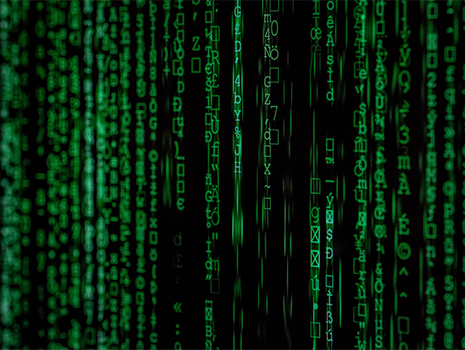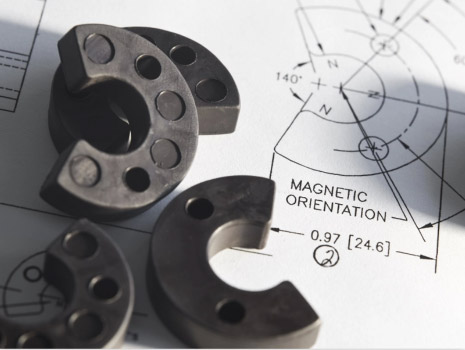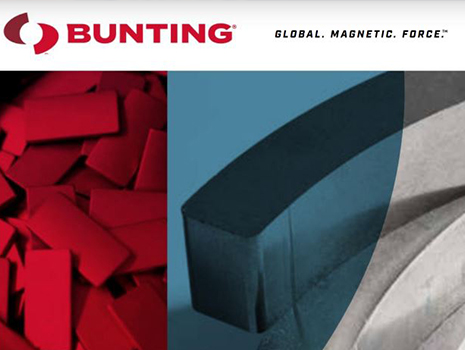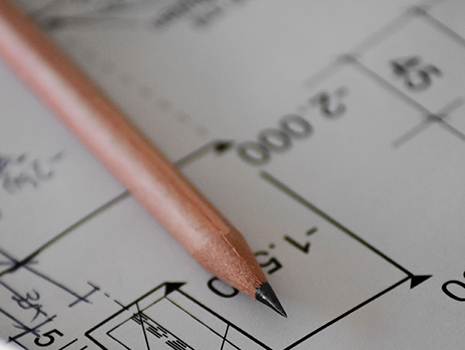
Magnetic Characteristics
Reluctance Changes
These changes occur when a magnet is subjected to permeance changes such as changes in air gap dimensions during operation. These changes will change the reluctance of the circuit, and may cause the magnet’s operating point to fall below the knee of the curve, causing partial and/or irreversible losses. The extent of these losses depend upon the material properties and the extent of the permeance change. Stabilization may be achieved by pre-exposure of the magnet to the expected reluctance changes.
Adverse Fields
External magnetic fields in repulsion modes will produce a demagnetizing effect on permanent magnets. Rare Earth magnets with coercive forces exceeding 15KOe are difficult to affect in this manner. However, Alnico which has a lower coercive force will encounter magnetic losses in the presence of any magnetic repelling force, including similar magnets. Applications involving Ceramic magnets with coercive forces of 4KOe should be carefully evaluated in order to assess the effect of external magnetic fields.
Shock, Stress and Variation
Below destructive limits, these effects are very minor on modern magnet materials. However, rigid magnet materials are brittle in nature and can be easily damaged or chipped by improper handling. Samarium Cobalt in particular is a fragile material and special handling precautions must be taken to avoid damage. Thermal shock when Ceramics and Samarium Cobalt magnets are exposed to high temperature gradients can cause fractures within the material and should be avoided.
Physical Characteristics and Machining of Magnets
Sintered Samarium Cobalt and Ceramic magnets exhibit small cracks within the material that occur during the sintering process. Provided that cracks do not extend more than halfway through a section, they do not normally affect the operation of the magnet. This is also true from small chips that may occur during machining and handling of these magnets, especially on sharp edges. Magnets may be tumbled to break the edges, this is done to avoid “feathering” of sharp edges due to the brittle nature of materials. Tumbling can achieve edge breaks of 0.003” to 0.010”. Although sintered NdFeB is relatively tough as compared to Samarium Cobalt and Ceramic, it is still brittle and care must be taken in handling. Bonded NdFeB is not as brittle as the sintered materials but it is softer and must be handled with care as well. Because of these inherent material characteristics, it is not advisable to use any permanent magnet material as a structural component of an assembly.
Rare Earth, Alnico, and Ceramic magnets are machined by grinding, which may considerably affect the magnet cost. Maintaining simple geometries and wide tolerances is therefore desirable from an economic point of view. Rectangular or round sections are preferable to complex shapes. Square holes (even with large radii) and very small holes are difficult to machine and should be avoided. Magnets may be ground to virtually any specified tolerance. However, to reduce cost, tolerances of less than 0.001” should be avoided if possible.
Cast Alnico materials exhibit porosity as a natural consequence of the casting process. This may become a problem with small shapes which are machined out of larger casting, but can account for a large portion of the smaller fabricated magnets. This may cause a problem where uniformity or low variation is critical and it may be advisable either to use a sintered Alnico or another material. In spite of its slightly lower magnetic properties, sintered Alnico may yield a higher or more uniform net density, resulting in equal or higher magnetic output.
In applications where the cosmetic qualities of the magnet are of a concern, special attention should be placed on selecting the appropriate material, since cracks, chips, pores, and voids are common in rigid magnet materials.





